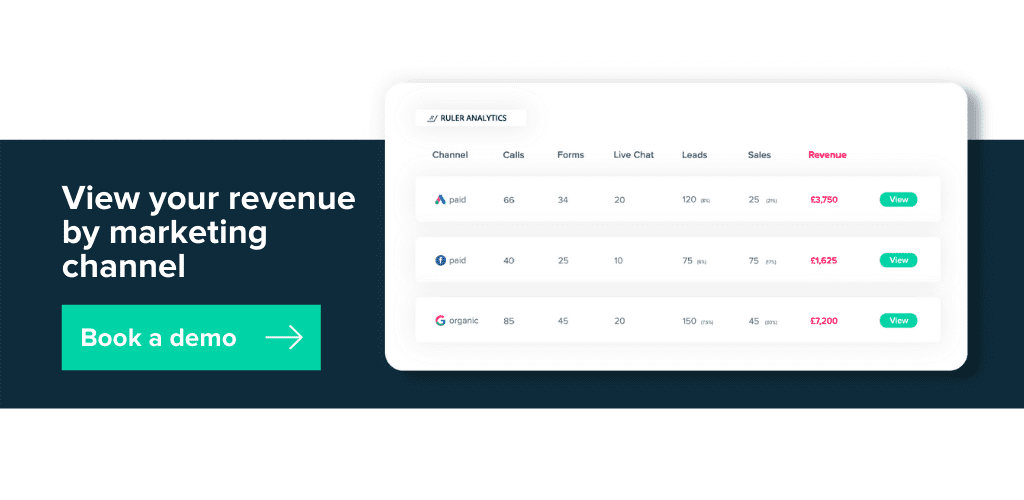Marketing touchpoints don’t need to be difficult to track. We walk you through how to pinpoint individual touchpoints and track full customer journeys so you can better understand how your audience engages with your marketing.
A user doesn’t land on your website and convert right away.
They’ll have multiple interactions, or touchpoints, with your content that leads them to move along a customer journey.
And with so much digital content out there, customer journeys are getting longer and longer.
In fact, 52% of companies reported that they have sales cycles lasting up to 3 months, while 19% have sales cycles longer than 4 months.
This makes it more difficult for digital marketers to critically assess their work as they can’t understand what is working
But there is a solution to all of this. Learn how to track full customer journeys here, or keep reading to learn:
So, let’s get stuck in.
🎧 Pro Tip
Listen to our complete guide to customer journey and touchpoint tracking here
You can define a touchpoint as any time someone engages with your business.
In marketing, a touchpoint would be anytime someone engages with your website, opens a marketing email or responds to a paid ad.
The thing with touchpoints is that they’re just a one-time singular point. Many marketing touchpoints together
All of these touchpoints in marketing work together to drive prospects into customers.
Touchpoints should impact how the person feels about your brand or product. Ultimately, you want to drive the user to make a purchasing decision.
Related: How to view full customer journeys with Ruler Analytics
Some good examples of a touchpoint leads and customers might encounter on their customer journey include:
Let’s look at this example customer journey. Here, Sara engages with your website 4 times. But she could have had many more touchpoints as she might have seen some social posts on your business Instagram account, seen a paid ad on Google or even driven past a billboard.
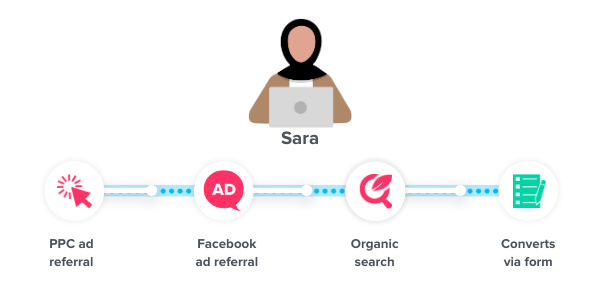
All of these count as a touchpoint and all of them work to drive the user from lead to sale.
Marketing journeys can range from 1 touchpoint to hundreds of touchpoints depending on your product, your industry and of course, your marketing outputs.
According to the Rain Group, it takes on average 8 touchpoints to get a meeting with a prospect. But how many touchpoints it takes in your own industry can really differ.
There are a number of contributing factors that can increase or decrease your sales cycle.
Related: How to speed up your sales cycle
If you work in a sector where price points are higher, then you can already expect more touchpoints to convert a contact.
But there are a whole range of other factors. Read more on what affects the number of touchpoints before a sale and see how to speed up your sales cycle.
If a touchpoint is a singular unit, then the buyer’s journey (or customer journey) is a series of touchpoints that leads an individual from a prospect to a customer.
Pro Tip
Before we break the customer journey down, we want to talk first about tracking your full journey for each and every customer. Read the guide to tracking customer touchpoints here.
Let’s break it down a bit.
The buyer’s journey is typically split into three distinct stages.
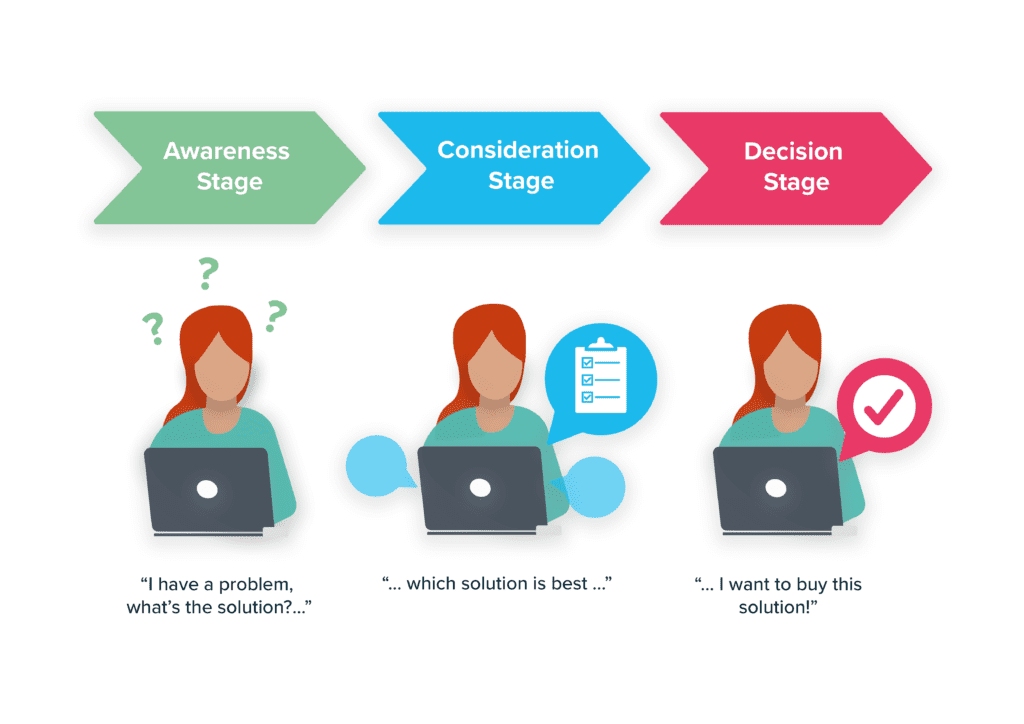

The first is the awareness stage. Here, the individual is looking for a solution to a problem. They’re researching their problem and looking for potential ways they can solve it.
Here, they first encounter your product or service as a possible solution.
They then move to the consideration stage. That’s what it says on the tin. Here, the individual is considering your product or service alongside several others. So, they’ll likely research how yours works and what makes it better (or worse) than the competition.
The final stage of the buyer’s journey is the decision stage. This is where the user becomes a customer by purchasing your product or service.
Related: Tracking each customer journey stage
Let’s use an example to illustrate how marketing touchpoints can make or break a buyer’s journey.
Sara is looking for a company to help solve a technical issue she’s encountering at work. After doing some research, she’s targeted with a PPC advert by a relevant company offering a valid solution to her problem.
This is her first touchpoint in the buyer’s journey and puts her in the awareness stage. However, she doesn’t convert yet.
She’s targeted again, this time with a Facebook advert. She clicks again and browses the website some more. But again, she doesn’t convert.
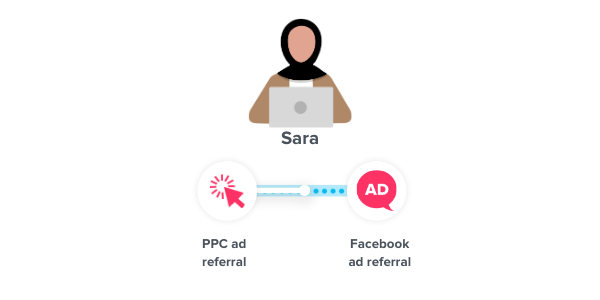

She’s looked at a few different websites now and organically lands on the website. After browsing for a while, she converts via a form to book a demo of the product.
Now, she’s in the consideration stage and is also a lead.




Sara sits her demo and is pleased with the product offered. She negotiates with the business and closes, becoming a paid customer.
She’s made a purchase, meaning she’s moved through the decision stage and is now closed revenue for the business.
While tracking touchpoints in marketing is possible, it isn’t always easy.
Here are a few reasons why.
Not every business utilises eCommerce. Some companies rely on conversions like phone calls, live chat and form fills. These create leads which are then closed offline by sales teams.
Tracking the volume of these conversion types is one hurdle. The second is attributing closed revenue back to the marketing channels and campaigns that drove those conversions.
Related: How to accurately track your leads
As we saw with Sara’s customer journey, she didn’t convert via her first touchpoint. It took four touchpoints to convert her and drive her down the buyer’s journey. And some industries see much longer customer journeys with hundreds of touchpoints!
While you might be able to get some insight on which channels are driving conversions, how can you attribute closed revenue to the right channels?
While you might get visibility of the last click conversion, what about the other touchpoints?
Take Sara’s journey for example.
While you might be able to see that she closed into a conversion via an organic search, what about the paid channels?
Without proper lead tracking, you can’t ensure that your marketing channels and campaigns are getting fair credit for driving revenue.
Touchpoints allow marketers to better understand which marketing channels are working hardest to start, drive or close buyer journeys.
And, with touchpoint tracking allows you to optimise your marketing so you can make sure the right person sees the right message at the right time.
With proper customer journey mapping, you can see how prospects enter your funnel and how your marketing drives them through. Tracking your touchpoints allows you to get even more granular insights.
Related: Customer journey analytics tools
Let’s use our example customer journey again. Sara engaged with the example website from Google paid, Facebook paid and organic before converting.




So, how would we track these touchpoints? The first issue is tracking the conversion via form fill. While we might be able to track this new conversion, we need to attribute it back to
Sara’s customer journey.
The other issue is attributing and crediting the relevant channels with the closed revenue from Sara’s purchase.
The solution is simple. A marketing attribution tool like Ruler Analytics.
No matter how your customers are converting; live chat, form fill, phone call, Ruler Analytics can track it.
In fact, Ruler will track every interaction with your website and gain a single view of how visitors are converting into leads and revenue.
So, when a user converts into a lead and is sent to a CRM, you’ll be able to see all the data you need.
Related: How to send lead source to your CRM with Ruler
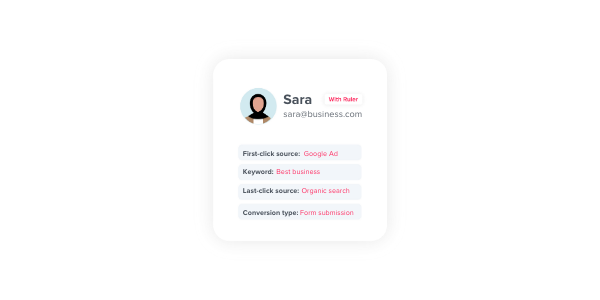

Ruler links your marketing tools to your CRM. So, when a lead closes into a sale, the revenue closed will be scraped and fired to your analytics tools.
Pro Tip
Learn more about attribution and how it works with our complete guide to marketing attribution
There, it will be attributed to the relevant channel, campaign and even keyword.
Related: How Ruler attributes revenue to your marketing
You’ll have all the data you need to optimise your marketing to drive more revenue and growth.
No matter if your lead closes in a month, 6 months or 2 years, Ruler will continue to monitor it.
As soon as it closes, it will assign revenue based on your chosen attribution model type so that you can see the data you need.
Here’s a quick overview of how Ruler works from start to end.
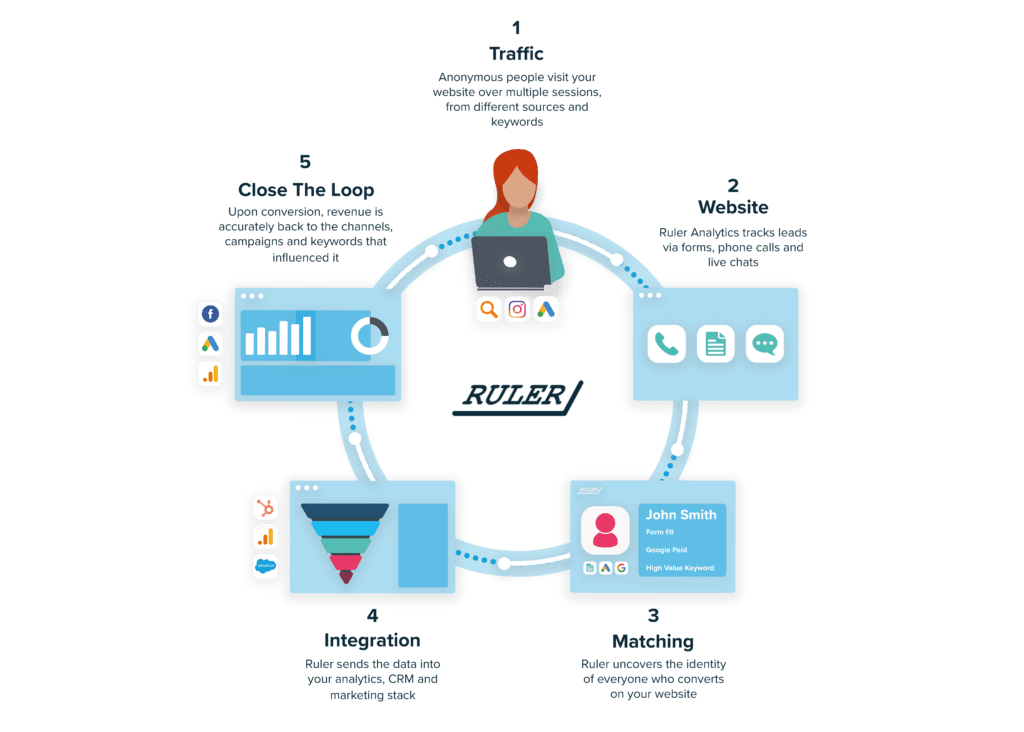

Tracking touchpoints in marketing doesn’t need to be hard work. With the right tools, you can automatically track every new prospect, lead and customer. You’ll get all the data you need in all the right applications.
See Ruler in action by booking a demo with our team. We’ll walk you through how you can track each and every touchpoint.
